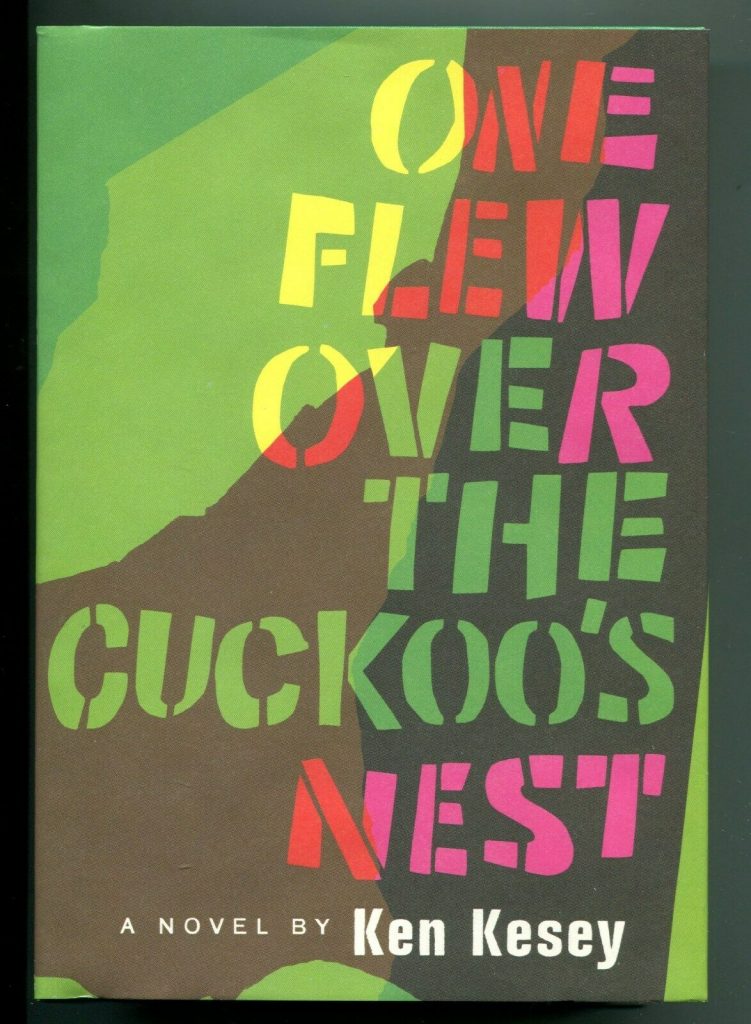 In the first half of our two-part guide to books read by all card-carrying hippies, we concentrated on what might be called the greatest hits, books like Be Here Now, Zen and the Art of Motorcycle Maintenance and The Whole Earth Catalog. The titles in this second volume extend the reach. Hippies, like most voracious readers, had eclectic taste, so, for starters, here we have several novels, including some in the sci-fi and fantasy realms. Some of these were written decades before the word hippie even came into vogue. We also pulled down from the bookshelf guides to sex and food; treatises on the environment, history, war and politics; poetry and prose collections and more. If you were a hippie, or still are, we’re betting you are familiar with most of these classics.
In the first half of our two-part guide to books read by all card-carrying hippies, we concentrated on what might be called the greatest hits, books like Be Here Now, Zen and the Art of Motorcycle Maintenance and The Whole Earth Catalog. The titles in this second volume extend the reach. Hippies, like most voracious readers, had eclectic taste, so, for starters, here we have several novels, including some in the sci-fi and fantasy realms. Some of these were written decades before the word hippie even came into vogue. We also pulled down from the bookshelf guides to sex and food; treatises on the environment, history, war and politics; poetry and prose collections and more. If you were a hippie, or still are, we’re betting you are familiar with most of these classics.
A note about omissions: These lists are not intended to be comprehensive. It is just a guide to some of the better known books that influenced and moved young people in the hippie era. Most of them read more than 30 books. So please feel free to suggest others or, even better, continue the list with your own favorites!
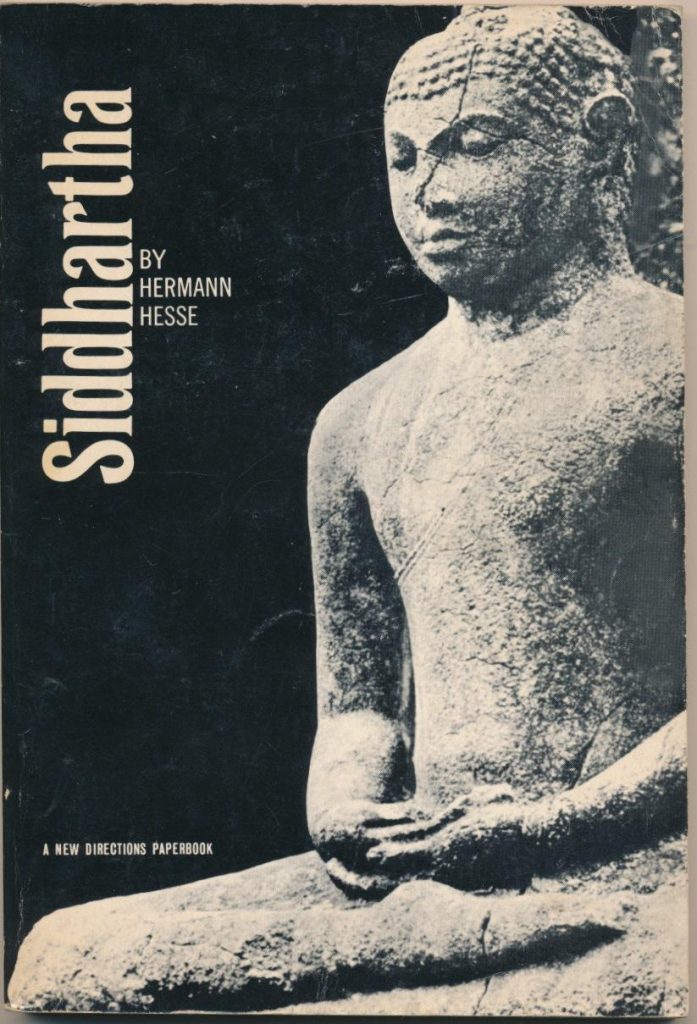 Siddhartha—Why was a book written by a German and published originally in 1922 (although not until 1951 in America) big with the hippies? Simple—because it addressed issues like spirituality and the meaning of life. Herman Hesse’s ninth novel dovetailed with hippies’ obsession with Buddhism and the quest for enlightenment. It postulates that such a state must come from within, not from outside influences. In a world that was increasingly fraught with trouble and distrust of norms, its messages hit home with young readers. Also by Hesse: Steppenwolf, which provided one classic rock band with a great name.
Siddhartha—Why was a book written by a German and published originally in 1922 (although not until 1951 in America) big with the hippies? Simple—because it addressed issues like spirituality and the meaning of life. Herman Hesse’s ninth novel dovetailed with hippies’ obsession with Buddhism and the quest for enlightenment. It postulates that such a state must come from within, not from outside influences. In a world that was increasingly fraught with trouble and distrust of norms, its messages hit home with young readers. Also by Hesse: Steppenwolf, which provided one classic rock band with a great name.
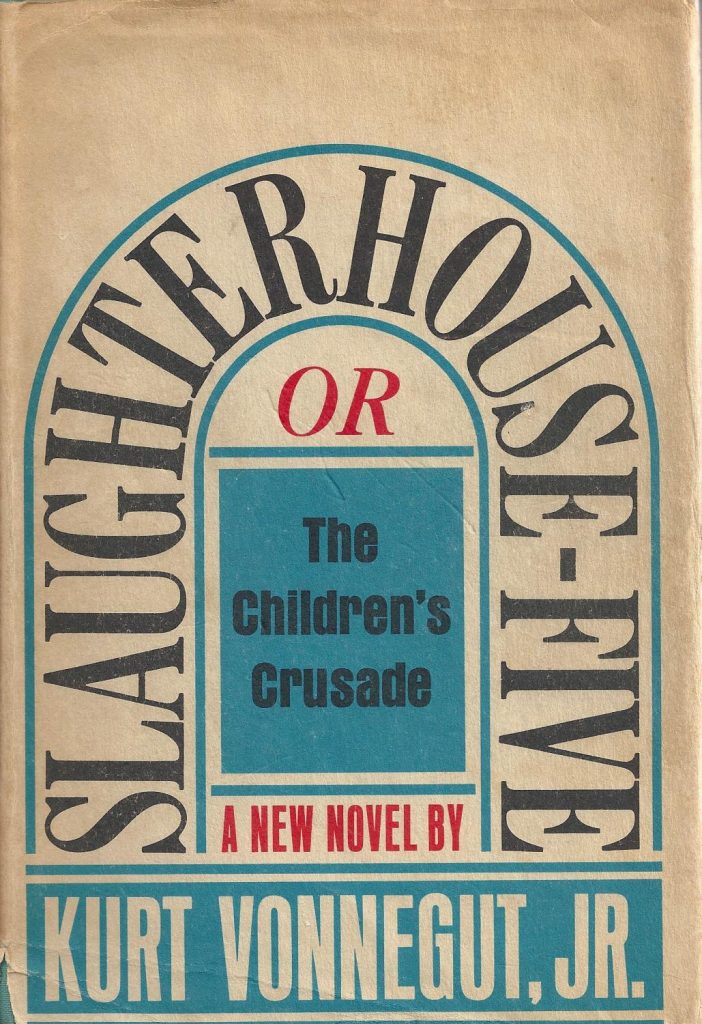 Slaughterhouse-Five—Kurt Vonnegut had already been a published author for close to two decades when Slaughterhouse-Five landed in bookstores in 1969. Some of his earlier works, like The Sirens of Titan and Cat’s Cradle, had been embraced by the countercultural set, but this new one, with its vehemently antiwar message, sci-fi undertones and unpredictable, skewed pacing was perfect for the times. [Available here.]
Slaughterhouse-Five—Kurt Vonnegut had already been a published author for close to two decades when Slaughterhouse-Five landed in bookstores in 1969. Some of his earlier works, like The Sirens of Titan and Cat’s Cradle, had been embraced by the countercultural set, but this new one, with its vehemently antiwar message, sci-fi undertones and unpredictable, skewed pacing was perfect for the times. [Available here.]
Watch the trailer for the film adaptation of Slaughterhouse-Five
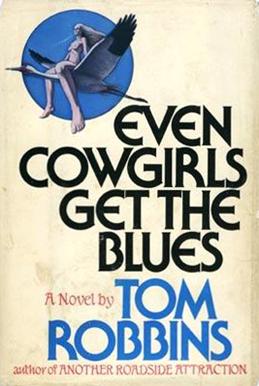 Even Cowgirls Get the Blues—Tom Robbins’ 1976 novel was a latecomer to the hippie field but it caught on with those who still identified as such. Populated with colorful characters, particularly Sissy Hankshaw, whose odd gift is her abnormally large thumbs, it touched upon such subjects as drugs, casual sex, political revolution and feminism, and found a ready audience among those seeking something a bit on the quirky side. [Available here.] (Also popular was his first novel, Another Roadside Attraction.)
Even Cowgirls Get the Blues—Tom Robbins’ 1976 novel was a latecomer to the hippie field but it caught on with those who still identified as such. Populated with colorful characters, particularly Sissy Hankshaw, whose odd gift is her abnormally large thumbs, it touched upon such subjects as drugs, casual sex, political revolution and feminism, and found a ready audience among those seeking something a bit on the quirky side. [Available here.] (Also popular was his first novel, Another Roadside Attraction.)
Even Cowgirls Get the Blues inspired a song. Watch Emmylou Harris and Patty Loveless sing it.
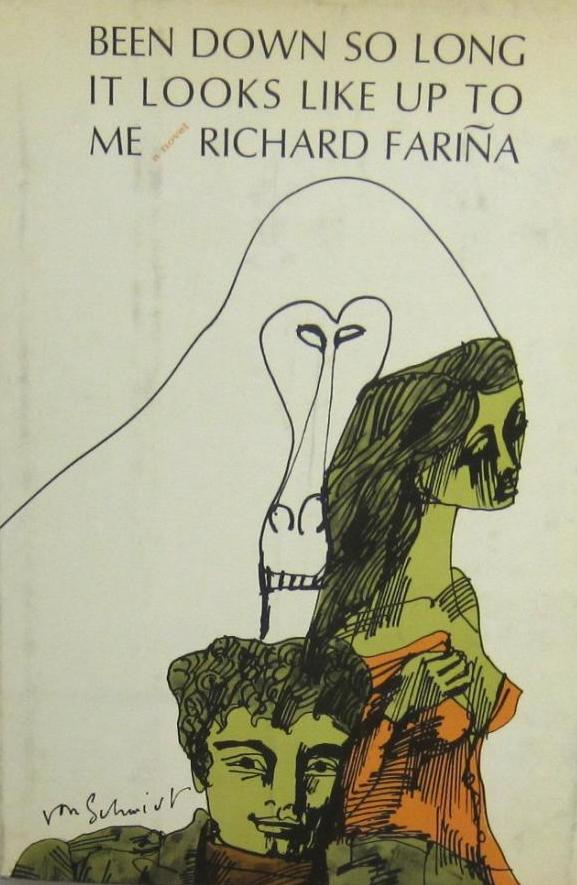 Been Down So Long It Looks Like Up to Me—Richard Fariña was known mostly as half of a folk music duo with his wife, Mimi, who also happened to be the sister of Joan Baez. Although it’s a novel, Been Down… incorporates much from Richard Fariña’s own life experiences (largely during his college years) and is injected with numerous comic moments while also tackling serious cultural touchstones. The book was published on April 28, 1966. Two days later, he was dead in a motorcycle accident, never to enjoy the success of his book, which was adapted for a movie five years later.
Been Down So Long It Looks Like Up to Me—Richard Fariña was known mostly as half of a folk music duo with his wife, Mimi, who also happened to be the sister of Joan Baez. Although it’s a novel, Been Down… incorporates much from Richard Fariña’s own life experiences (largely during his college years) and is injected with numerous comic moments while also tackling serious cultural touchstones. The book was published on April 28, 1966. Two days later, he was dead in a motorcycle accident, never to enjoy the success of his book, which was adapted for a movie five years later.
Listen to Richard and Mimi Fariña sing “Bold Marauder”
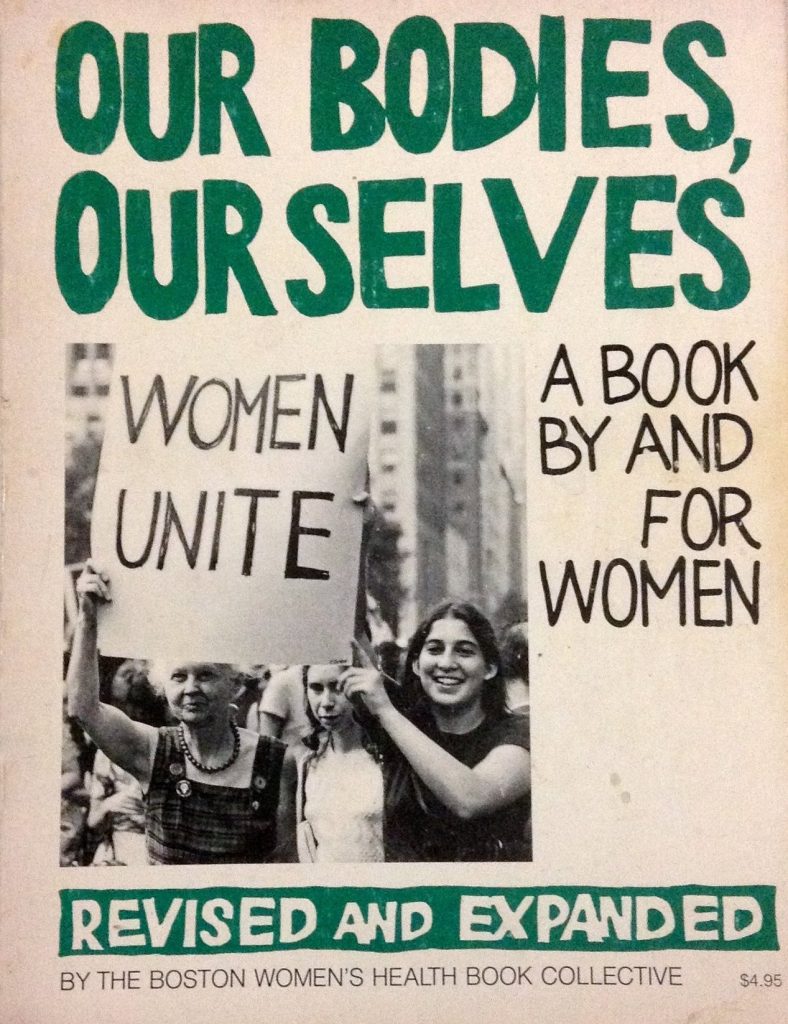 Our Bodies, Our Selves—Originally credited to the Boston Women’s Health Book Collective and published in 1973, Our Bodies, Our Selves served as a sweeping guide to women’s sexuality and body issues, touching upon everything from gender roles to pregnancy, birth control, abortion and even menopause. At a time when these topics were still largely discussed in hushed tones, it was celebrated by women when feminism was just entering the mainstream.
Our Bodies, Our Selves—Originally credited to the Boston Women’s Health Book Collective and published in 1973, Our Bodies, Our Selves served as a sweeping guide to women’s sexuality and body issues, touching upon everything from gender roles to pregnancy, birth control, abortion and even menopause. At a time when these topics were still largely discussed in hushed tones, it was celebrated by women when feminism was just entering the mainstream.
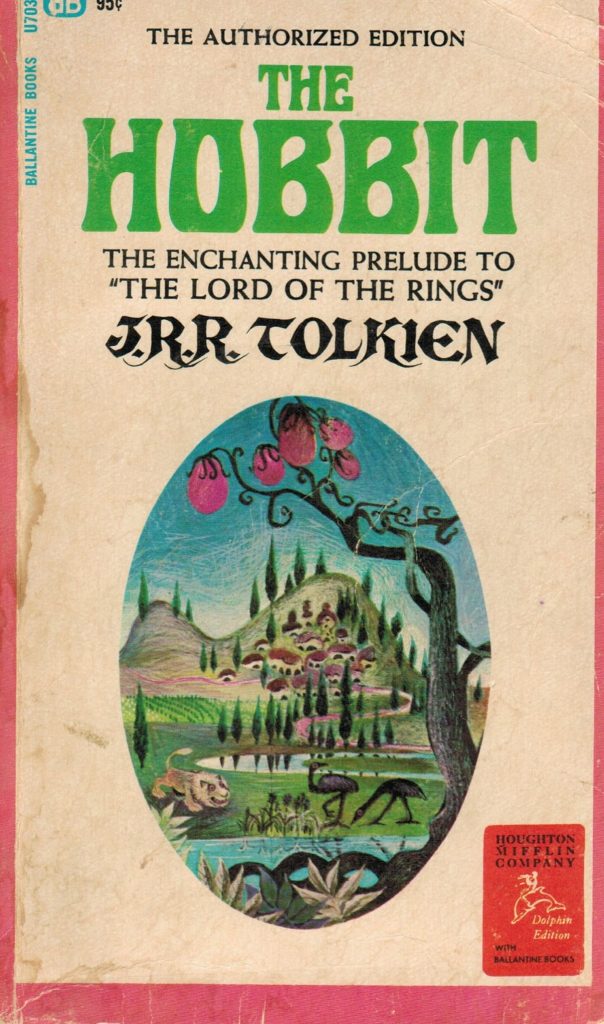 The Hobbit—Why would a fantasy novel, written by British author J.R.R. Tolkien and first published in 1937, hit home with so many young people three decades later? The Hobbit wasn’t even aimed at adult readers initially but its tale of characters with names like Bilbo Baggins and Gandalf, a dragon named Smaug and a place called Middle Earth was surreal enough that it fascinated the hippie set. Like many other books that this generation enjoyed, there is a quest for something greater here, and a vividly imagined alternate world, a story that one could easily get lost in. And for an encore, Tolkien came up with the three-volume The Lord of the Rings, which, of course, has not only sold hundreds of millions of copies but, due to the film adaptations, is more ubiquitous and beloved than ever. [Available here.]
The Hobbit—Why would a fantasy novel, written by British author J.R.R. Tolkien and first published in 1937, hit home with so many young people three decades later? The Hobbit wasn’t even aimed at adult readers initially but its tale of characters with names like Bilbo Baggins and Gandalf, a dragon named Smaug and a place called Middle Earth was surreal enough that it fascinated the hippie set. Like many other books that this generation enjoyed, there is a quest for something greater here, and a vividly imagined alternate world, a story that one could easily get lost in. And for an encore, Tolkien came up with the three-volume The Lord of the Rings, which, of course, has not only sold hundreds of millions of copies but, due to the film adaptations, is more ubiquitous and beloved than ever. [Available here.]
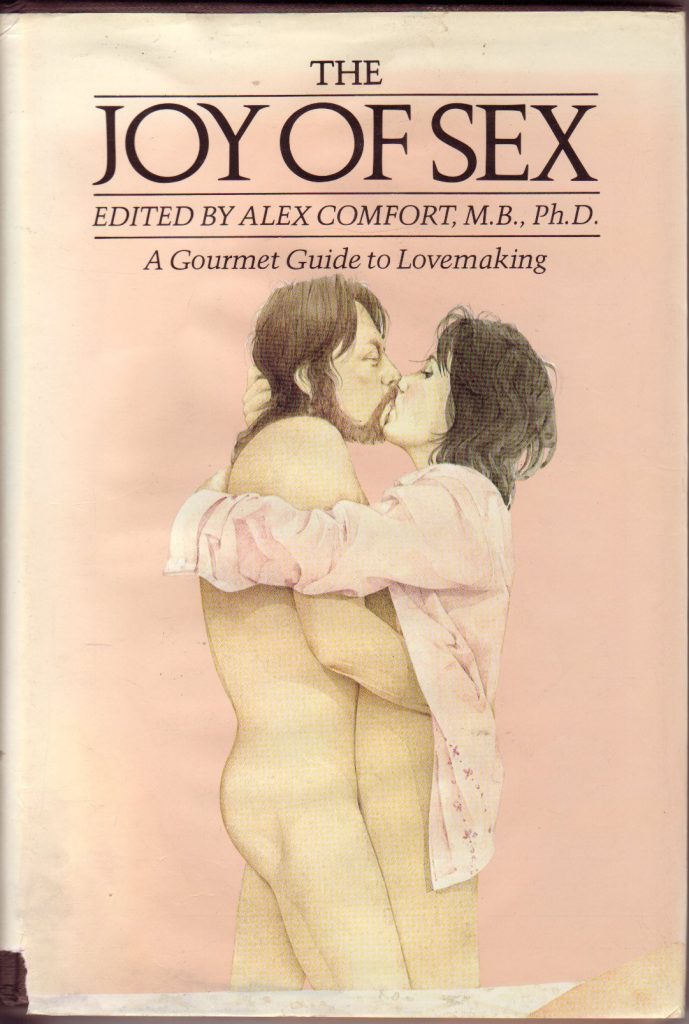 The Joy of S*x—Whatever you called it—free love, sexual liberation or just having a good time—there is no denying that it came out of hiding in the ’60s and ’70s. Alex Comfort’s illustrated book was conceived as a guide, a manual, on the order of a cookbook. And it seems that a lot of people were waiting for something like it because it spent more than a year on the New York Times best-seller list. [Various editions are available here.]
The Joy of S*x—Whatever you called it—free love, sexual liberation or just having a good time—there is no denying that it came out of hiding in the ’60s and ’70s. Alex Comfort’s illustrated book was conceived as a guide, a manual, on the order of a cookbook. And it seems that a lot of people were waiting for something like it because it spent more than a year on the New York Times best-seller list. [Various editions are available here.]
Watch: Marvin Gaye’s “Sexual Healing” has no connection to Alex Comfort’s book, but it just seems to belong here.
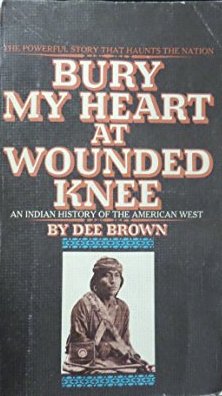 Bury My Heart at Wounded Knee—Young Caucasian Americans were fascinated by the Native Americans and their culture, but many did not have a clue about the true history of the indigenous people, who were slaughtered and displaced in vast numbers. Dee Brown’s 1970 non-fiction book was an eye-opener, detailing the history of the people who’d lived here before the Europeans came over and changed the land forever. It was published around the same time as the emergence of the American Indian Movement, and went a long way toward educating the nation’s current residents, changing many minds about the lives of the natives and the fate they suffered.
Bury My Heart at Wounded Knee—Young Caucasian Americans were fascinated by the Native Americans and their culture, but many did not have a clue about the true history of the indigenous people, who were slaughtered and displaced in vast numbers. Dee Brown’s 1970 non-fiction book was an eye-opener, detailing the history of the people who’d lived here before the Europeans came over and changed the land forever. It was published around the same time as the emergence of the American Indian Movement, and went a long way toward educating the nation’s current residents, changing many minds about the lives of the natives and the fate they suffered.
Listen to Buffy Sainte-Marie’s “Bury My Heart at Wounded Knee,” inspired by the book
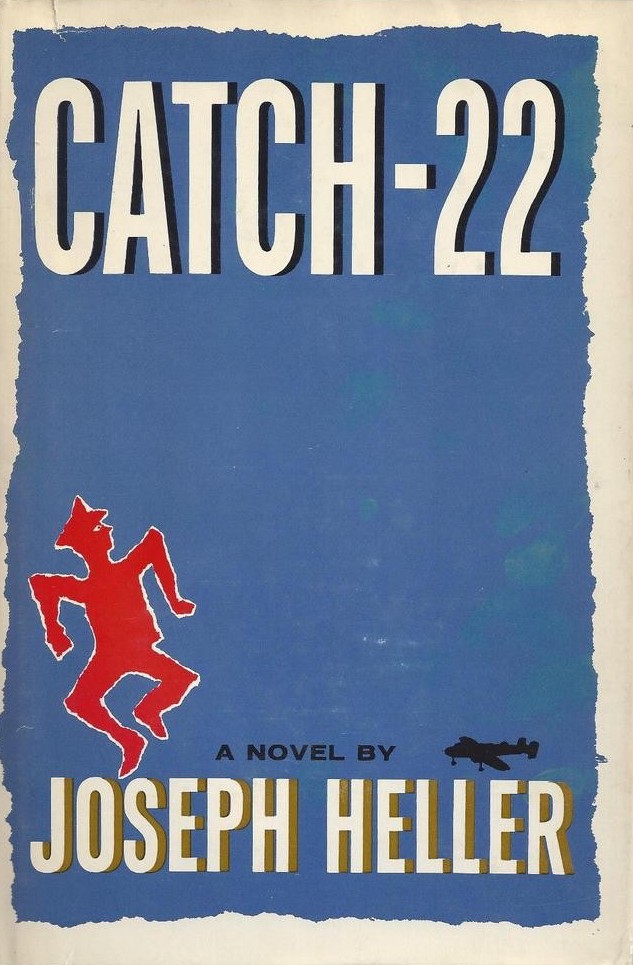 Catch-22—Another book whose publication (in 1961) predates the hippie era, and another with an antiwar theme, Joseph Heller’s Catch-22 is satirical and irreverent in tone but it’s also unyielding in its characterization of war as horror. The protagonists are not heroes; they are in fact victims of a system that entraps them. The title itself became an oft-used phrase apart from the book: a catch-22 is a situation from which one can’t escape due to irrationally conflicting circumstances. The absurdist notions presented in the book’s short stories rang true with a generation that sometimes felt hopelessly mired in situations they had no control over. [Available here.]
Catch-22—Another book whose publication (in 1961) predates the hippie era, and another with an antiwar theme, Joseph Heller’s Catch-22 is satirical and irreverent in tone but it’s also unyielding in its characterization of war as horror. The protagonists are not heroes; they are in fact victims of a system that entraps them. The title itself became an oft-used phrase apart from the book: a catch-22 is a situation from which one can’t escape due to irrationally conflicting circumstances. The absurdist notions presented in the book’s short stories rang true with a generation that sometimes felt hopelessly mired in situations they had no control over. [Available here.]
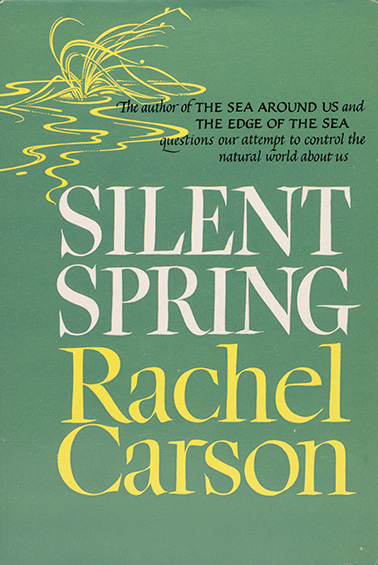 Silent Spring—Even today there are those who dismiss the catastrophes our planet faces. All the way back in 1962, Rachel Carson cautioned us about the effect pesticides and other poisons were having on the Earth. The book helped to kick-start the environmental movement and many young people took its warnings to heart. Even those who did not actually read the book—especially during the back-to-the-land movement of the late ’60s and ’70s—learned second-hand about the dangers it foretold and understood the science that Carson referred to. Silent Spring is recognized as one of the most important science-based books ever published, and its impact is still felt today.
Silent Spring—Even today there are those who dismiss the catastrophes our planet faces. All the way back in 1962, Rachel Carson cautioned us about the effect pesticides and other poisons were having on the Earth. The book helped to kick-start the environmental movement and many young people took its warnings to heart. Even those who did not actually read the book—especially during the back-to-the-land movement of the late ’60s and ’70s—learned second-hand about the dangers it foretold and understood the science that Carson referred to. Silent Spring is recognized as one of the most important science-based books ever published, and its impact is still felt today.
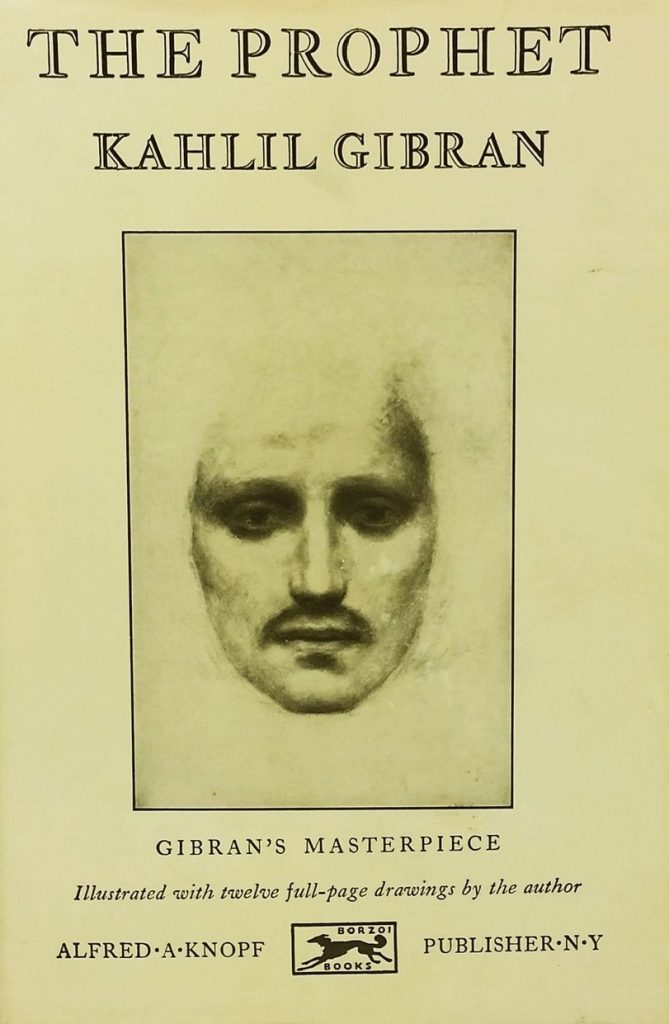 The Prophet—The Lebanese-American author and poet Kahlil Gibran published his collection of meditations on love, life, family, religion and a host of other topics back in 1923. It was a short book, just over 100 pages, but more than four decades later its words still had significance to a generation looking for universal truths.
The Prophet—The Lebanese-American author and poet Kahlil Gibran published his collection of meditations on love, life, family, religion and a host of other topics back in 1923. It was a short book, just over 100 pages, but more than four decades later its words still had significance to a generation looking for universal truths.
Listen to Richard Harris read The Prophet
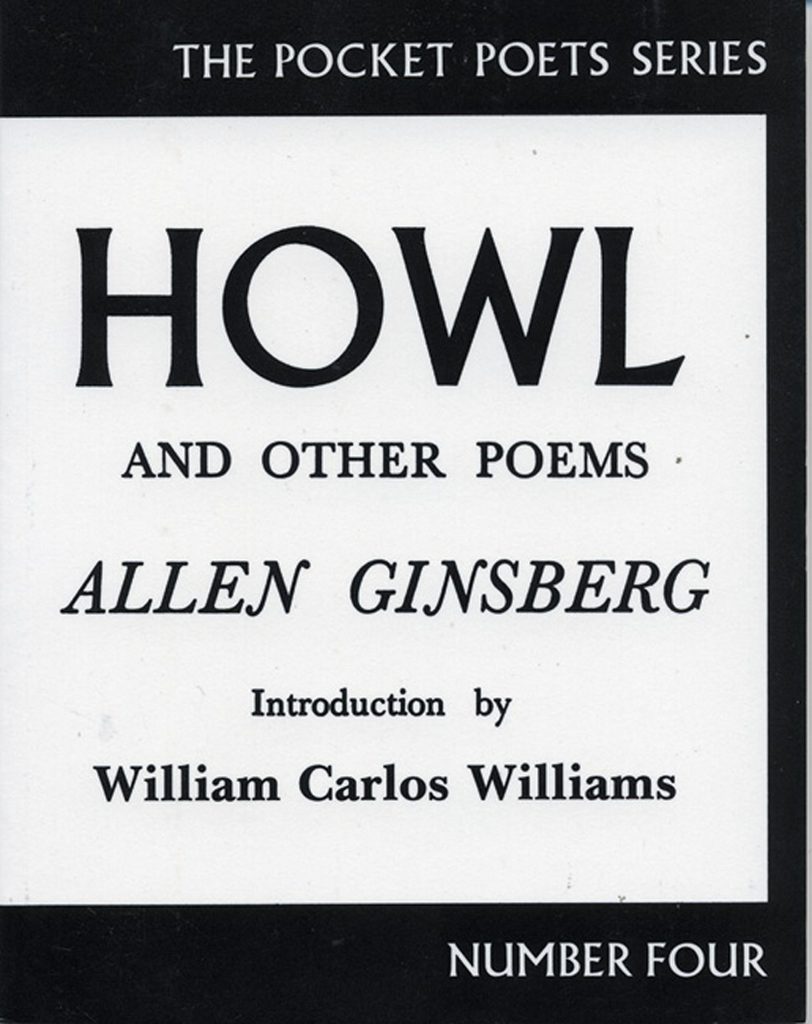 Howl and Other Poems—It’s impossible to grasp, today, just how much of a threat a poem could be to some. Allen Ginsberg’s most revered—and feared—work, published in 1956, was so shockingly raw that it was banned in some cities. Its fiery rants about sex, conformity, freedom, authority and more were nothing less than a direct assault on the status quo; in San Francisco, where it was published, it was the subject of a landmark obscenity trial. Ginsberg prevailed, became a hero to the next few generations, and continued to produce marvelously vibrant, thought-provoking work for the rest of his life.
Howl and Other Poems—It’s impossible to grasp, today, just how much of a threat a poem could be to some. Allen Ginsberg’s most revered—and feared—work, published in 1956, was so shockingly raw that it was banned in some cities. Its fiery rants about sex, conformity, freedom, authority and more were nothing less than a direct assault on the status quo; in San Francisco, where it was published, it was the subject of a landmark obscenity trial. Ginsberg prevailed, became a hero to the next few generations, and continued to produce marvelously vibrant, thought-provoking work for the rest of his life.
Watch: This isn’t Howl, but it’s Allen Ginsberg and Paul McCartney in a duet in 1995. How cool is that?
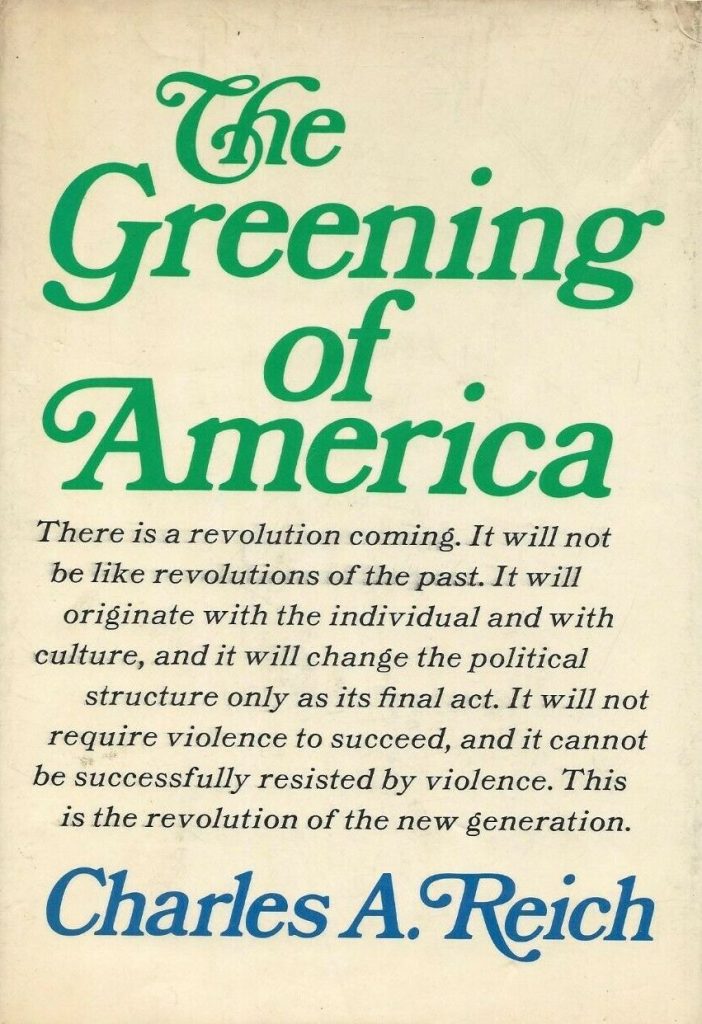 The Greening of America—Charles A. Reich’s 1970 book advertised its intentions right on its front cover, under the title, where it proclaimed, “There is a revolution coming. It will not be like revolutions of the past…This is the revolution of the new generation.” Like many, Reich believed that a fundamental change was brewing, one that would not just remake society but human consciousness. While it was idealist in nature, it was not bleary-eyed; he made his case that new values would emerge and take us into a saner future. To what extent that occurred is debatable, but at the time Reich’s words resonated with many.
The Greening of America—Charles A. Reich’s 1970 book advertised its intentions right on its front cover, under the title, where it proclaimed, “There is a revolution coming. It will not be like revolutions of the past…This is the revolution of the new generation.” Like many, Reich believed that a fundamental change was brewing, one that would not just remake society but human consciousness. While it was idealist in nature, it was not bleary-eyed; he made his case that new values would emerge and take us into a saner future. To what extent that occurred is debatable, but at the time Reich’s words resonated with many.
Related: Read the first part of Books That Every Hippie Owned
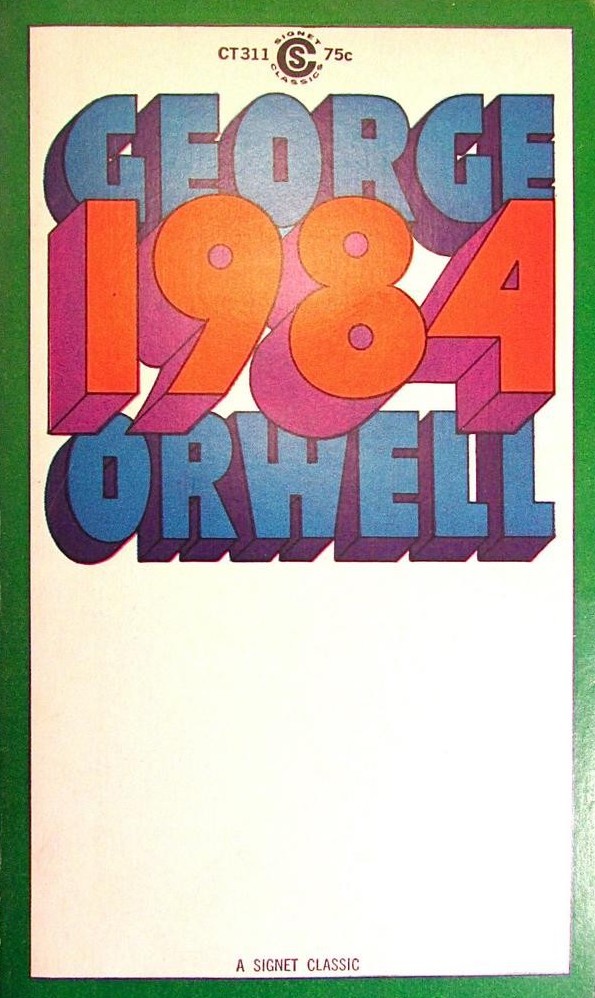 Nineteen Eighty-Four—Coming after his equally significant Animal Farm and several other novels, Nineteen Eighty-Four was actually written, by George Orwell, in 1949. To call it prescient would be an understatement. Orwell envisioned a future where science-fiction, politics and reality were not only intertwined but virtually indistinguishable from one another, where a phrase might mean the opposite of what one would expect it to mean, where the totalitarian state was pervasive and accepted (Big Brother was always watching and the Thought Police were never far). The very number 1984 and the word Orwellian came into vogue in its wake, signifying a future world where citizens were little more than subjects to be controlled, both literally and mentally, by those with the power. In the anti-authoritarian climate of the ’60s, Orwell’s masterpiece found a receptive new audience. [Available here.]
Nineteen Eighty-Four—Coming after his equally significant Animal Farm and several other novels, Nineteen Eighty-Four was actually written, by George Orwell, in 1949. To call it prescient would be an understatement. Orwell envisioned a future where science-fiction, politics and reality were not only intertwined but virtually indistinguishable from one another, where a phrase might mean the opposite of what one would expect it to mean, where the totalitarian state was pervasive and accepted (Big Brother was always watching and the Thought Police were never far). The very number 1984 and the word Orwellian came into vogue in its wake, signifying a future world where citizens were little more than subjects to be controlled, both literally and mentally, by those with the power. In the anti-authoritarian climate of the ’60s, Orwell’s masterpiece found a receptive new audience. [Available here.]
Listen to David Bowie’s song “1984”
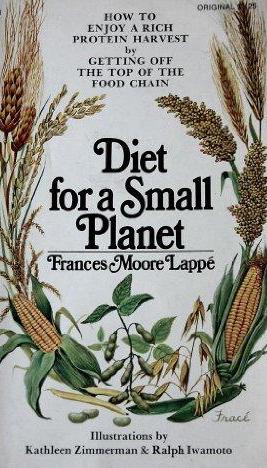 Diet for a Small Planet—Many hippies and other young people engaging in what would later be called alternative lifestyles became vegetarians, but they didn’t always know what to eat or why they even made the change. Frances Moore Lappe’s 1971 study concentrated on the advantages of a plant-based diet, going into great detail about the ills of the meat production industry, the impact of meat production on the environment, the importance of finding protein elsewhere and what to eat if you were giving up meat. Hundreds of vegetarian cookbooks have since been published, but this one was the pioneer, the first to reach a wide readership.
Diet for a Small Planet—Many hippies and other young people engaging in what would later be called alternative lifestyles became vegetarians, but they didn’t always know what to eat or why they even made the change. Frances Moore Lappe’s 1971 study concentrated on the advantages of a plant-based diet, going into great detail about the ills of the meat production industry, the impact of meat production on the environment, the importance of finding protein elsewhere and what to eat if you were giving up meat. Hundreds of vegetarian cookbooks have since been published, but this one was the pioneer, the first to reach a wide readership.
 One Flew Over the Cuckoo’s Nest—In the first installment of our guide to books owned by hippies, we mentioned Tom Wolfe’s The Electric Kool-Aid Acid Test, which chronicled the LSD-fueled journeys and experiments of Ken Kesey and his band of psychedelic-school-bus-riding Merry Pranksters. But before there were the Pranksters, there was Kesey’s groundbreaking, irreverent novel set in an Oregon psychiatric hospital. The book wasn’t so much intended as an exposé of the treatment of psychiatric patients—it was quite humorous and impertinent, a jab at authority figures and very controversial—but it became that anyway.
One Flew Over the Cuckoo’s Nest—In the first installment of our guide to books owned by hippies, we mentioned Tom Wolfe’s The Electric Kool-Aid Acid Test, which chronicled the LSD-fueled journeys and experiments of Ken Kesey and his band of psychedelic-school-bus-riding Merry Pranksters. But before there were the Pranksters, there was Kesey’s groundbreaking, irreverent novel set in an Oregon psychiatric hospital. The book wasn’t so much intended as an exposé of the treatment of psychiatric patients—it was quite humorous and impertinent, a jab at authority figures and very controversial—but it became that anyway.
Watch the trailer for the film version of One Flew Over the Cuckoo’s Nest, starring Jack Nicholson
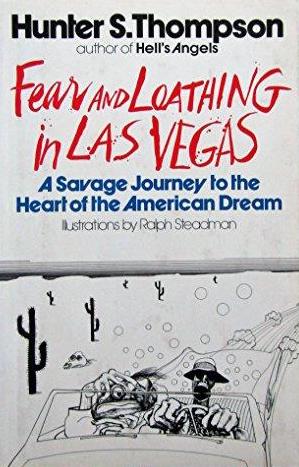 Fear and Loathing in Las Vegas—The best-known book by Hunter S. Thompson, this 1971 novel, illustrated by Ralph Steadman, grew out of a series that originally ran in Rolling Stone magazine. Thompson had already built a following by then but the book expanded his fan base greatly, as it was relentless in its condemnation of American consumerism and greed, and the obsession with money, excess and power. As important as the book’s content was Thompson’s over-the-top, hold-onto-your-seat writing style—as deranged as the author himself, who immediately became a famous counterculture figure. [Available here.]
Fear and Loathing in Las Vegas—The best-known book by Hunter S. Thompson, this 1971 novel, illustrated by Ralph Steadman, grew out of a series that originally ran in Rolling Stone magazine. Thompson had already built a following by then but the book expanded his fan base greatly, as it was relentless in its condemnation of American consumerism and greed, and the obsession with money, excess and power. As important as the book’s content was Thompson’s over-the-top, hold-onto-your-seat writing style—as deranged as the author himself, who immediately became a famous counterculture figure. [Available here.]
Watch: When Hunter S. Thompson met David Letterman
- Remembering Marty Balin, Jefferson Airplane/Starship Singer - 01/30/2025
- Spencer Davis Group’s ‘I’m a Man’: Admit It, You Don’t Know the Lyrics - 01/20/2025
- 72 Classic Rock Albums From 1972 - 01/16/2025

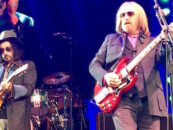
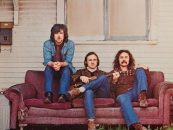

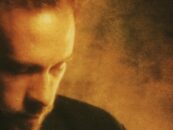

22 Comments so far
Jump into a conversationMy 34 favorite books from the 1960s: APOLOGIES TO THE IROQUOIS (Edmund Wilson, 1960); INDIANS IN PENNSYLVANIA (Paul Wallace, 1961); STRANGER IN A STRANGE LAND (Robert Heinlein, 1961); THE PATRIOT CHIEFS (Alvin Josephy, 1961); AMERICAN INDIAN PROSE AND POETRY (Margaret Astrow, 1962); ONE FLEW OVER THE CUCKOO’S NEST (Ken Kesey, 1962); SILENT SPRING (Rachel Carson, 1962); AZTEC THOUGHT AND CULTURE (Miguel Leon-Portilla, 1963); BOOK OF THE HOPI (Frank Waters, 1963); IROQUOIS MUSIC AND DANCE (Gertrude Kurath, 1964); NOVA EXPRESS (William Burroughs, 1964); HOW TO TALK DIRTY AND INFLUENCE PEOPLE (Lenny Bruce, 1965); RED MAN’S RELIGION (Ruth Underhill, 1965); THE AUTOBIOGRAPHY OF MALCOLM X (Malcolm X & Alex Haley, 1965); THE PSYCHEDELIC READER (Timothy Leary & Others, 1965); THE VARIETIES OF PSYCHEDELIC EXPERIENCE (Masters & Houston, 1966); CHE GUEVARA SPEAKS (Ernesto Che Guevara, 1967); DANGEROUS VISIONS (Harlan Ellison & Others, 1967); THE MEDIUM IS THE MESSAGE (Marshall McLuhan, 1967); THE NEW INDIANS (Stan Steiner, 1967); STARTING FROM SAN FRANCISCO (Lawrence Ferlinghetti, 1967); BLACK MUSIC (LeRoi Jones, 1968); HOUSE MADE OF DAWN (N. Scott Momaday, 1968); PLANET NEWS (Allen Ginsberg, 1968); REVOLUTION FOR THE HELL OF IT (Abbie Hoffman, 1968); THE ARMIES OF THE NIGHT (Norman Mailer, 1968); THE ELECTRIC KOOL-AID ACID TEST (Tom Wolfe, 1968); THE TEACHINGS OF DON JUAN (Carlos Castaneda, 1968); CUSTER DIED FOR YOUR SINS (Vine Deloria, 1969); JIM MORRISON AND THE DOORS (Mike Jahn, 1969); ROCK ENCYCLOPEDIA (Lillian Roxon, 1969); STYLES OF RADICAL WILL (Susan Sontag, 1969); THE DEATH AND REBIRTH OF THE SENECA (Anthony Wallace, 1969), THE NEW LEFT (Priscilla Long & Others).
Thanks for mentioning “Stranger in a Strange Land”. It influenced me at 32 to move to Oregon to be a Hippie in 1972. A bit old but never looked back.
This Sci-Fi book you mentioned- Stranger in a Strange Land- is a title to one of Leon Russell’s songs. It was this book that he had read and its title which inspired him to write his song with that same title!
Todd, consider any/all of Norman Spinrad’s novels and shorts but especially The Mind Game.
I was born in 1960 my friends say I’m a hippie mostly due to the way I dress and the way I decorate my apartment. For every hippie out there or self-proclaimed hippie a must-read is The Profit by Kahlil Gibran
“Disobedience and Democracy” by Howard Zinn
“The Limits to Growth” by Donella H. Meadows et. al.
“Fire in the Lake — The Americans and Vietnamese in Vietnam” by Frances FitzGerald
two that sold well back then were” the anarchist cookbook” and the “Tibetan book of the dead”
Fear & Loathing In Las Vegas is to my thinking the best in the hippiedom realm! I started reading this classic 3 years after it was published and it is a quintessential masterpiece!!! ✌️
Morning of the Magicians, Pauwells, Bergier, Autobiography of a Yogi Paramahansa Yogananda, Steal This Book, Fuck the System, Abbie Hoffman, Siddhartha, Bead Game, Steppenwolf, Hermann Hesse. Zen Flesh, Zen Bones, Paul Reps, Spice Box of the Earth, The Favorite Game, Beautiful Losers, Leonard Cohen, Tarantula, Bob Dylan, Psychedelic Experience & Tibetan Book of the Dead, Timothy Leary, Zen Macrobiotics George,Osawa, On the Road with Bob Dylan, Ratso Sloman, Cosmic Consciousness , Bucke, Drugs and the Mind, The Master Game, De Ropp, the Hite Report, Shere Hite, Rock Dreams, Peeleart,
1001 Ways to Beat the Draft, 1001 Ways to Live without Working, 1001 Ways to Make Love, Listen to the Mockingbird, Tuli Kupferberg, The Family, Tales of Beatnik Glory, Ed Sanders, Beat Zen, Square Zen, Alan Watts, Advertisements for Myself, Norman Mailer, Sexual Politics, Kate Millet,
Raja Yoga , Vivekenanda, Seed, Ram Dass,The Happy Birthday of Death, Gregory Corso, Psychic Self Defense, Dione Fortune,Teachings of Don Juan, a Yaqui sorcerer, Carlos Castenedas,The I Ching, Three Chinese gentlemen. A.E, Waite Tarot Guide,
Great selection
Great list…thank you!
I was an American flower child born in 1959. I loved Paris art, London fashion, Chinese food, and all British Invasion and American music. Especially South Side Johnny. I read Go Ask Alice and The Great Gatsby. My favorite movie was Dog Day Afternoon. My favorite actor Al Pacino. I played guitar just for me. We didn’t have much money. For my high school graduation all I asked for is the book The Prophet. Which I still have. I’m a Christian who doesn’t go to church. The first president I voted for was Jimmy Carter (my partner Ray worked on his campaign!) And the most recent was Joe Biden. I didn’t wear a bra much then, and I still often don’t. I am a professional artist and singer. We march for Black Lives Matter and for an end to gun violence. And together Ray and I have published a non profit cookbook to feed the hungry. Some things never change. Peace baby.
I can’t really remember.
Ralph j Gleasons 1968 jefferson airplane and the San Francisco sound.
We deliberately omitted music books but yes, that’s a good one.
Troutfishing in America by Richard Brautigan.
It’s in the first part of the article–see the link at the top.
If you had to get from here to there, VW repair for the Compleat Idiot. and Zen and the art of Motorcycle repair. Once you got there, The BooHoo Bible.
Mad Magazine ,,,great social commentary
And The National Lampoon, for those us who briefly thought we had “outgrown” MAD.
And don’t forget R. Crumb and Zap Comix.
Yeah Mad was kind of a bible for me. Wasn’t it kind of a link between the Beats and the Hippies? It moved on thru the 80s and 90s.
Anyone remember a book everyone was reading about the cultural revolution in China? My boyfriend dropped out of Boston College and he carried this book with him everywhere.